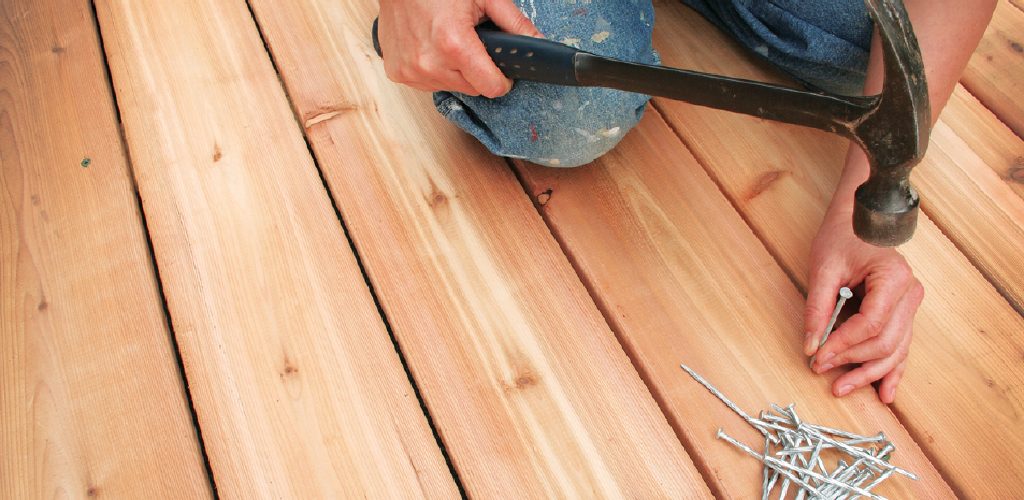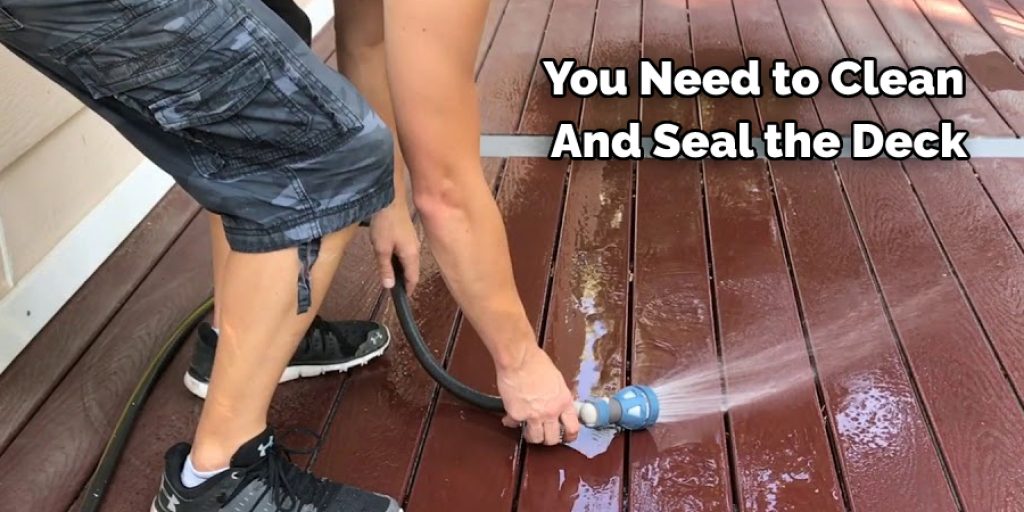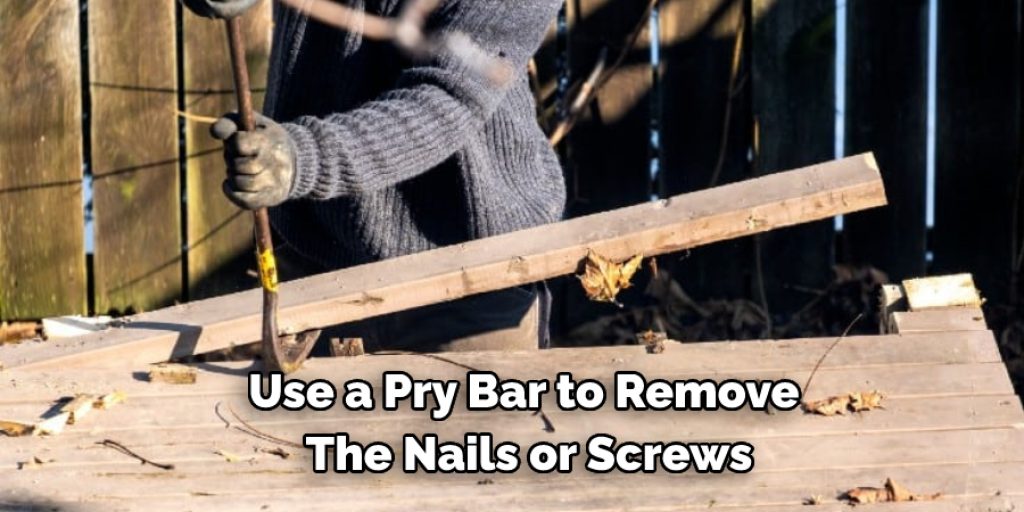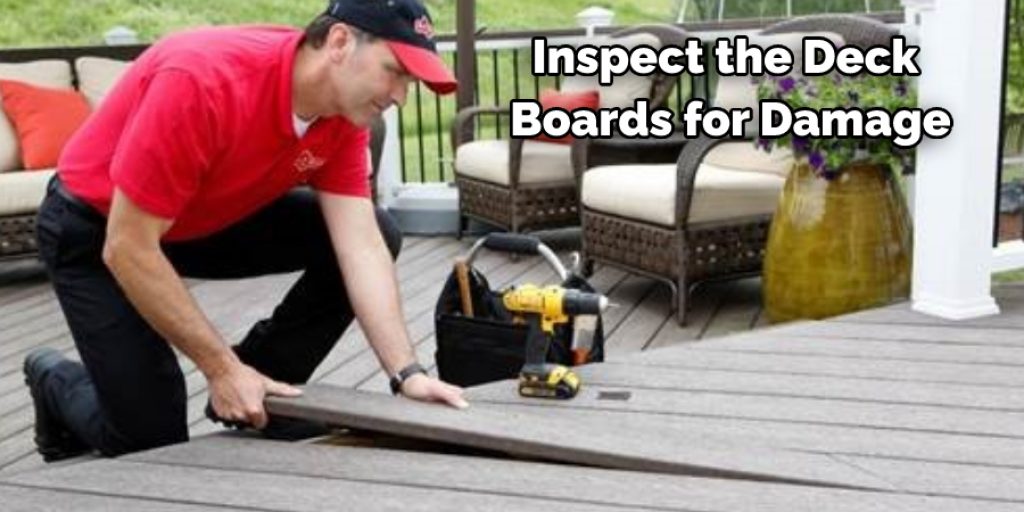How to Fix Curled Up Deck Boards
If you have deck boards curling up at the edges, you can do a few things to fix the problem. In this guide, we will discuss how to fix curled up deck boards. First, check to see if the boards are properly sealed or treated. If they aren’t, this may be causing the problem. You’ll need to clean and seal the decks before Proceeding with any other repairs.

Another possible cause of curled deck boards is improper installation. If the boards are not installed correctly, they may start to curl as they dry out and expand. This can be fixed by replacing any warped or damaged boards and ensuring that all new panels are installed correctly. Read on to know more!
What is Causing the Boards to Curl?
There are several factors that can contribute to deck boards curling up. One common cause is moisture imbalance, where one side of the board is exposed to more moisture than the other. This can happen if your deck is not properly sealed, allowing water to seep into the boards and cause them to warp.
Another possible cause is poor ventilation. If there isn’t enough airflow under your deck, it can trap moisture and lead to curling or warping of the boards. Additionally, using low-quality or green wood for your deck can also cause the boards to curl as it dries out.
The weather can also play a role in causing deck boards to curl. Extreme heat or cold can cause the boards to expand and contract, leading to warping and buckling.
Why is it Important to Fix Curled-Up Deck Boards?
Fixing curled up deck boards is important for several reasons. Firstly, it can be a safety hazard as the uneven surface can cause people to trip and fall. It also affects the overall appearance of your deck, making it look worn out and neglected.
Moreover, if left unchecked, curled-up deck boards can lead to further damage and costly repairs in the future. The warped boards can weaken the structure of your deck, making it more susceptible to rot, mold, and insect infestation.
You also want to fix curled up deck boards for the longevity of your deck. By addressing the issue promptly, you can prevent further damage and ensure that your deck lasts for many years to come.
Needed Materials:
Deck Sealer or Stain (if Boards Are Not Properly Sealed):
If you determine that the boards are not properly sealed or treated, you will need to clean and seal them. Choose a high-quality deck sealer or stain to protect your deck from moisture and UV damage.

Hammer:
A hammer is necessary for removing any damaged or warped boards and for securing new ones in place.
Replacement Boards:
You will need replacement boards if the damaged ones cannot be repaired. Make sure to choose boards of the same type and size as your existing deck boards.
Tape Measure:
A tape measure will come in handy to ensure proper alignment and spacing when installing new boards.
Saw:
If you need to cut the replacement boards to fit, a saw will be necessary.

10 Common Reasons That Cause Curled Up Deck Boards:
1. Improper Acclimation:
When you first get your decking boards, you’ll need to let them sit outside in the sun and rain for a few days so that they can adjust to the elements. If you don’t do this properly, the boards will start to curl up.
2. Too Much Sun Exposure:
If your deck gets a lot of direct sunlight, it can cause the boards to start curling up. The best way to prevent this is to install awnings or umbrellas to shade the deck.
3. Incorrect Board Spacing:
They will curl up if you don’t leave enough space between your deck boards. Be sure to leave at least a 1/4 inch gap between each board. Try one of the other methods below if the boards are still curling after you’ve spaced them correctly.
4. Poor Drainage:
If your deck doesn’t have proper drainage, water can build up and cause the boards to start curling. Ensure there’s a gap between the deck and the house so that water can drain properly.
5. Shrinking Deck Boards:
As the deck boards dry out, they will start to shrink. This can cause them to curl up at the edges. The best way to prevent this is to seal and stain your deck regularly.

6. Warping Deck Boards:
If the deck boards are warped, they will start to curl up. The best way to prevent this is to make sure the boards are properly spaced and good drainage.
7. Poor Quality Deck Boards:
If you use poor-quality decking boards, they will start to curl up soon after you install them. Be sure to use high-quality decking boards to avoid this problem.
8. Improperly Fastened Boards:
If your deck boards are not correctly fastened, they may start to curl up at the edges. This can be caused by factors such as the wood shrinking as it dries out or the nails or screws not being driven in deep enough.
To fix this problem, you will need to remove the curling boards and reattach them using longer nails or screws. You may also need to add additional support to the boards to prevent them from curling up again in the future.
9. Weak or Damaged Boards:
If you have any boards on your deck that are weak or damaged, they will likely be the first to start curling. These boards should be replaced as soon as possible to prevent further damage to your deck.
10. Poorly Attached Boards:
If the deck boards are poorly attached, they will be more prone to curling. Check to make sure that all of the screws or nails are properly inserted and that there is no space between the deck board and the railing or support post. If you do find any gaps, fill them in with caulk or wood filler.
Following these tips on how to fix overheating ps3 and addressing any issues promptly can help prevent your deck boards from curling up and ensure the longevity of your deck. By understanding the common causes and taking preventive measures, you can keep your deck looking beautiful and safe for years to come.
10 Ways How to Fix Curled Up Deck Boards:
1. Use a Pry Bar to Remove the Nails or Screws:
If your deck boards are screwed down, you can use a pry bar to remove the screws. If your deck boards are nailed down, you will need to use a nail puller to remove the nails.
2. Inspect the Deck Boards for Damage:
Once you have removed the nails or screws, inspect the deck boards for any damage. If you find any cracks, splits, or other damage, you will need to replace the deck boards.
3. Replace Damaged Deck Boards:
If you find any damage, you will need to replace the deck boards. To do this, you will need to remove the nails or screws holding the deck board in place. Once the nails or screws are removed, you can replace the deck board with a new one.
4. Inspect the Subfloor for Damage:
After replacing the damaged deck boards, you will need to inspect the subfloor for any damage. If you find any cracks, splits, or other damage, you will need to repair the subfloor.
5. Repair Damaged Subfloors:
If you find any damage to the subfloor, you will need to repair it. To do this, you will need to remove the damaged section of the subfloor and replace it with a new piece of the subfloor.
6. Install a New Deck Board:
If you have a severely damaged board, you may need to install a new deck board. To do this, you will need to remove the nails or screws holding the board in place. Once the nails or screws are removed, you can install a new deck board.
7. Inspect the Joists for Damage:
After replacing the damaged deck boards and repairing the subfloor, you will need to inspect the joists for any damage. If you find any cracks, splits, or other damage, you must repair the joists.

8. Repair Damaged Joists:
If you find any damage to the joists, you will need to repair it before you can fix the deck boards. Use a saw to cut away any damaged wood, then replace it with new lumber. Be sure to use the same type of wood as the original joist.
9. Nail Down Deck Boards:
Once the joists are repaired, nail down the deck boards using galvanized nails. Start at the outside edge of the deck and work your way in. Be sure to use enough nails so that the boards are secure.
10. Screw Down Deck Boards:
You can screw down the deck boards if you prefer instead of nailing them down. To do this, start at the outside edge of the deck and work your way in. Then, use a drill with a Phillips head bit to secure the screws.
Following these 10 ways on how to fix curled up deck boards will help you maintain a beautiful and safe outdoor space. By addressing any issues promptly and taking preventive measures, you can prevent your deck boards from curling up in the first place.
Some Helpful Tips and Suggestions:
Here, we have given some tips on how to fix curled up deck boards
1. If your deck boards are curling up at the edges, it could be due to a lack of moisture. Try watering your deck regularly and see if that makes a difference.
2. Another reason for curling deck boards could be because they were not installed properly in the first place. Ensure that the panels are properly secured to the joists so that they don’t have the chance to curl up.
3. If your deck is made of composite material, it is less likely to suffer from curling problems. However, if you notice that the boards are curling, you can try using a heat gun to straighten them out.
4. If you have wooden deck boards, you can try using wood glue to attach them back down to the joists. Apply a generous amount of glue to the underside of the board, and then press it back into place.
5. You can also try stapling the boards down with a heavy-duty stapler. This is not a permanent fix, but it will hold the boards in place until you can find a more permanent solution.
6. If your deck is made of composite material and the boards are curling, you may need to replace them. Contact the manufacturer of your decking material to see if they offer replacement boards.
7. If you have a deck that needs repair, it is important to get it fixed as soon as possible. A damaged deck can be dangerous, and it can also lower the value of your home.
Why You Should Fix Curled Up Deck Boards?
If you have deck boards that are starting to curl up at the edges, it’s important to take action and fix the problem. Curling deck boards can be caused by various factors, including moisture, temperature changes, and poor ventilation. Not only is a curly deck an eyesore, but it can also be dangerous.
Curled-up deck boards can be a trip hazard and make your deck more susceptible to water damage. However, there are a few different ways to fix curled-up deck boards. One option is to replace the damaged boards simply. This is often the best solution if the damage is extensive.
Another option is to use screws or nails to reattach the boards to the joists. This is a less-expensive option, but it can be more time-consuming. The final option is to use a sealant or coating to help protect the deck boards from moisture and temperature changes.
Frequently Asked Questions:
Q: How Do You Prevent Deck Boards From Curling Up?
A: To prevent deck boards from curling up, make sure they are properly installed with enough space between each board for ventilation. Regularly clean and seal the deck to protect it from moisture. Also, avoid excessive exposure to direct sunlight and extreme temperature changes. Additionally, using composite materials or treating wooden boards with a water-resistant coating can help prevent curling.
Q: How Do You Repair a Warped Deck Board?
A: If the deck board is only slightly warped, you can try using weights or clamps to hold it in place while it dries out. If this does not work, you may need to remove and replace the board with a new one. For more severe warping, you may need to consult a professional for repair or replacement. Additionally, addressing underlying issues such as moisture and ventilation can help prevent future warping.
Q: How Do You Know When It’s Time to Replace Deck Boards?
A: Some signs that it’s time to replace your deck boards include extensive damage, rotting, and excessive warping or curling. If the boards are no longer stable or are posing a safety hazard, it is definitely time to replace them. Additionally, if you notice significant discoloration or fading, it may be time for a deck board replacement. Regular maintenance and inspections can help identify when it’s time for replacement before the damage becomes too severe.
Q: Can You Repair Composite Deck Boards?
A: Yes, composite deck boards can be repaired in some cases. Minor scratches or scuffs can be sanded down and filled with a color-matched epoxy filler. However, if the damage is more extensive, it may be necessary to replace the damaged boards entirely. Consult the manufacturer for specific guidance on repairing their composite materials.
Q: How Can I Improve the Lifespan of My Deck Boards?
A: To improve the lifespan of your deck boards, regularly maintain and clean them to prevent moisture damage. Avoid excessive weight or pressure on the boards, and address any issues with ventilation to prevent curling or warping. Additionally, using high-quality materials and proper installation techniques can also help extend the lifespan of your deck boards. It’s also recommended that any damage be regularly inspected and repaired promptly to prevent it from worsening.
By following these tips and suggestions, you can maintain a beautiful and safe deck for years to come. Regular maintenance and addressing issues promptly can help prevent problems like curled-up deck boards or warping, saving you time and money in the long run. Enjoy your outdoor space with confidence after properly fixing any damage to your deck boards. So go on, gather up your tools and get started on fixing those curled-up deck boards!
Conclusion:
Curled deck boards can be an eyesore and may lead to further damage if not fixed. The following tips will help you how to fix curled up deck boards using products that are already likely in your home. Be sure to take your time and measure twice before starting the repair process!
Deck board repair is a relatively simple task, but it is essential to do it correctly so that the boards stay in place and don’t curl up again. Have you tried any of these methods for fixing curled deck boards? Let us know in the comments below!
You can check it out to Apply Deck Correct




